Remember when the heart of the home was a kaleidoscope of avocado green and harvest gold? The 1970s kitchen was a unique blend of space-age optimism and earthy comfort that defined an entire generation’s relationship with cooking and family time. From wall-to-wall shag carpeting that somehow seemed logical in a food preparation area to appliances that looked like they belonged on a spaceship, these kitchens were nothing if not memorable.
1. Avocado Green and Harvest Gold Everything
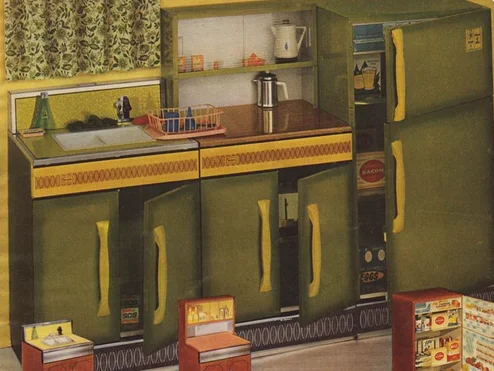
The color palette of the ’70s kitchen was unmistakable – everything came in shades that matched the decade’s obsession with earth tones and nature. Your refrigerator, dishwasher, stove, and even small appliances all coordinated in that distinctive avocado green or warm harvest gold that seemed so sophisticated at the time. Walking into one of these kitchens was like stepping into a perfectly curated advertisement from Better Homes & Gardens.
These weren’t just accent colors – they were the main event, dominating every surface and appliance in sight. The psychology behind it was simple: if everything matched, it must be stylish, right? Looking back, it’s hard to imagine how we thought a refrigerator the color of baby food was the height of elegance, but somehow it all worked together in that uniquely ’70s way.
2. Carpet in the Kitchen (Yes, Really)
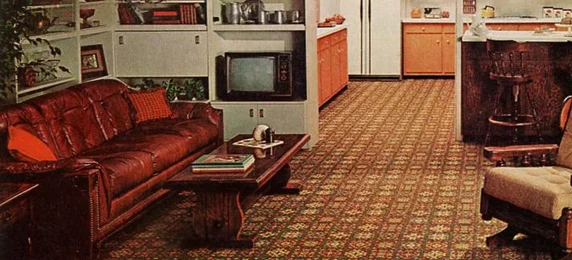
Nothing says “1970s” quite like wall-to-wall carpeting in the kitchen, and somehow it seemed like the most natural thing in the world. The logic was that carpet was warmer and more comfortable underfoot than cold linoleum, especially during those long cooking sessions. Popular choices included deep oranges, browns, and that infamous shag pile that trapped everything from coffee grounds to cookie crumbs.
Maintenance was, shall we say, an adventure that required dedication and a good vacuum with serious suction power. Every spill became a minor crisis, and the weekly deep-clean ritual involved steam cleaners and prayers that last night’s spaghetti sauce wouldn’t leave a permanent reminder. Yet families lived with it for years, and many of us have fond memories of doing homework at the kitchen table with our feet buried in that plush, if impractical, carpeting.
3. Ice Cube Trays with Metal Levers
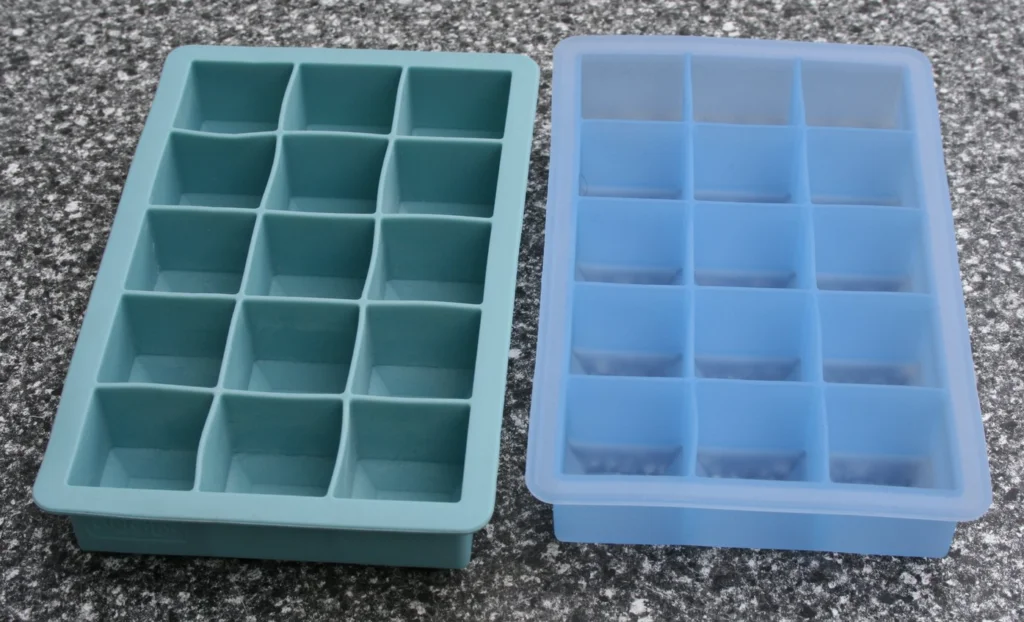
Before automatic ice makers became standard, the humble metal ice cube tray with its satisfying lever mechanism was the star of every freezer. You’d fill each compartment carefully, trying not to spill water all over the freezer floor, then wait patiently for nature to work its magic. The real satisfaction came with that distinctive “crack” sound when you pulled the lever and twisted the tray to release perfectly formed cubes.
There was an art to it that today’s push-button generation will never understand – the precise angle, the right amount of force, the timing. Too soon and you’d get half-frozen slush; too late and you’d need a jackhammer to separate the tray from the freezer wall. But when you mastered it, those perfectly released ice cubes dropping into your glass felt like a small victory in the daily routine of domestic life.
4. Macramé Plant Hangers Everywhere
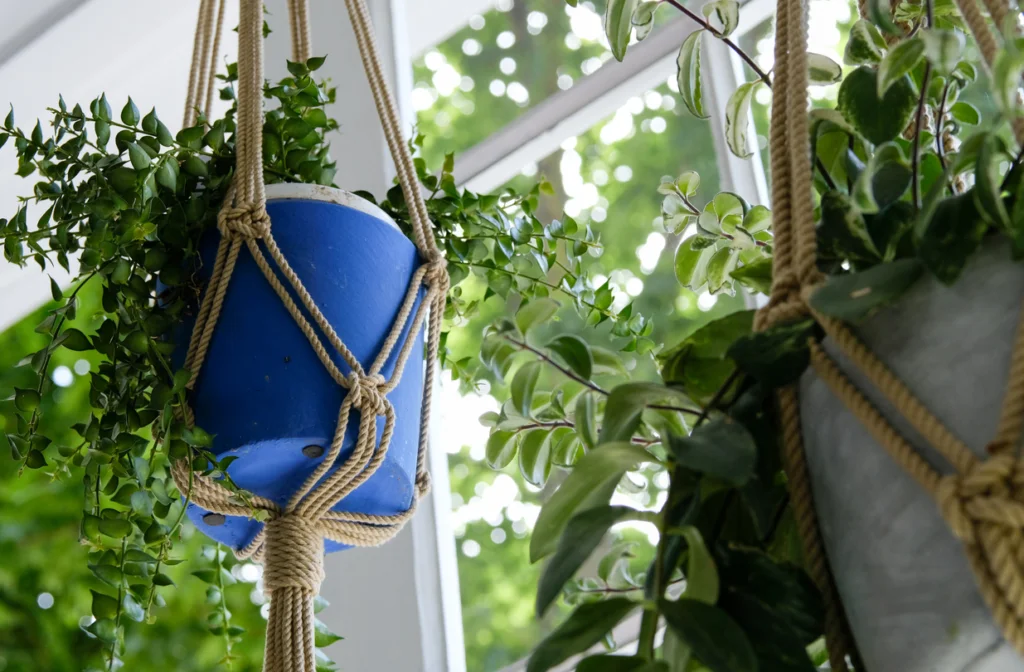
No ’70s kitchen was complete without at least three macramé plant hangers swaying gently from the ceiling, each cradling a spider plant or trailing pothos. These handwoven masterpieces, often crafted during weekend macramé parties with the neighbors, brought nature indoors in the most groovy way possible. The intricate knots and beaded details weren’t just functional – they were artistic statements that said, “Yes, I’m both domestic and creative.”
Positioning was everything: you needed enough light for the plants but not so much that the macramé cord would fade, and definitely not anywhere near the stove where cooking vapors might cause issues. The gentle swaying motion as you moved through the kitchen created a zen-like atmosphere that perfectly captured the decade’s fascination with natural living. Plus, they were conversation starters when guests visited – everyone had a story about their own macramé adventures.
5. Fondue Pots and Entertaining Sets
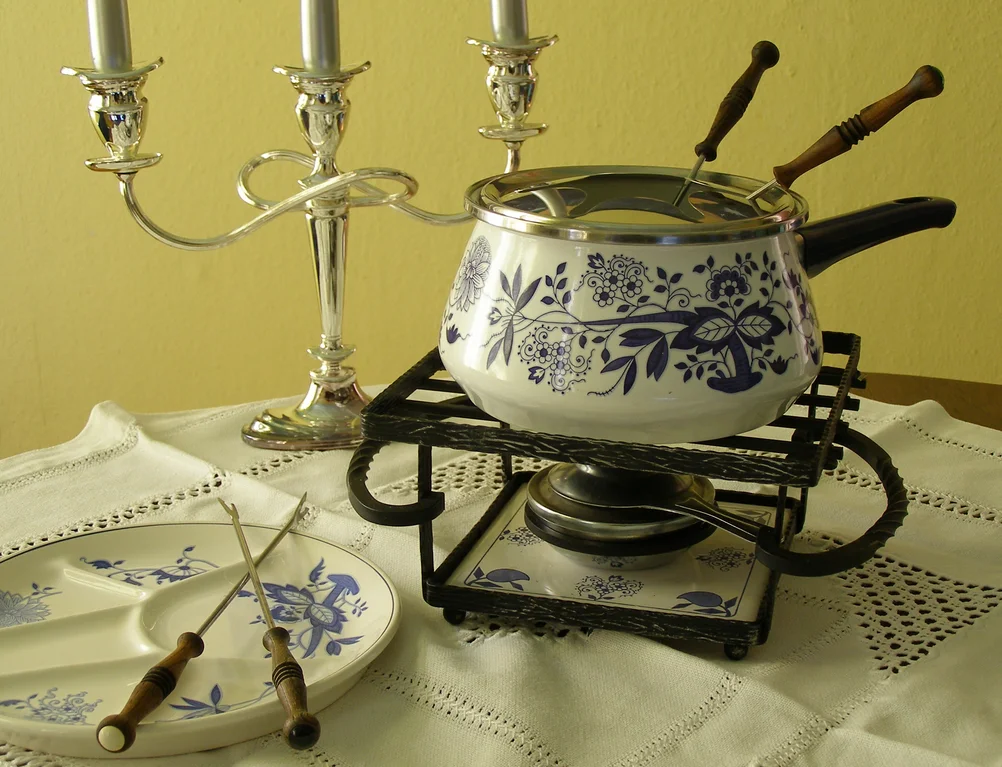
The fondue pot wasn’t just kitchen equipment – it was the centerpiece of sophisticated entertaining and the ultimate symbol of ’70s social life. Whether it was cheese fondue for a casual evening with friends or chocolate fondue for a romantic dinner, these little cauldrons of melted goodness brought people together around the table. The ritual of spearing bread cubes or fruit and carefully dipping them into the communal pot was both intimate and festive.
Every household seemed to have at least one fondue set, often received as a wedding gift and proudly displayed on open shelving between uses. The ceramic or copper pots came with their own special fuel burners, long-handled forks, and usually a cookbook filled with exotic recipes that promised to transport your dinner party to a Swiss chalet. Even if you only used it twice a year, having a fondue pot meant you were ready for elegant entertaining at a moment’s notice.
6. Wood Grain Contact Paper on Everything

Real wood paneling was expensive, but wood grain contact paper could transform any surface into a rustic masterpiece for the cost of a few rolls and an afternoon’s work. Kitchen cabinets, countertops, and even appliances got the faux wood treatment, creating a warm, cabin-like atmosphere that was supposed to bring nature indoors. The most popular patterns mimicked oak, walnut, or pine, complete with realistic grain patterns that fooled absolutely no one but looked fantastic anyway.
Application was a family affair that tested patience and relationships as you tried to smooth out air bubbles and line up the grain patterns perfectly. The edges were always the tricky part – getting them to stick around corners without lifting or creating unseemly wrinkles required the skills of a master craftsman. But once it was done, you could step back and admire your handiwork, knowing you’d achieved that coveted wood-paneled look without the wood-paneled budget.
7. Spice Racks with Matching Glass Jars
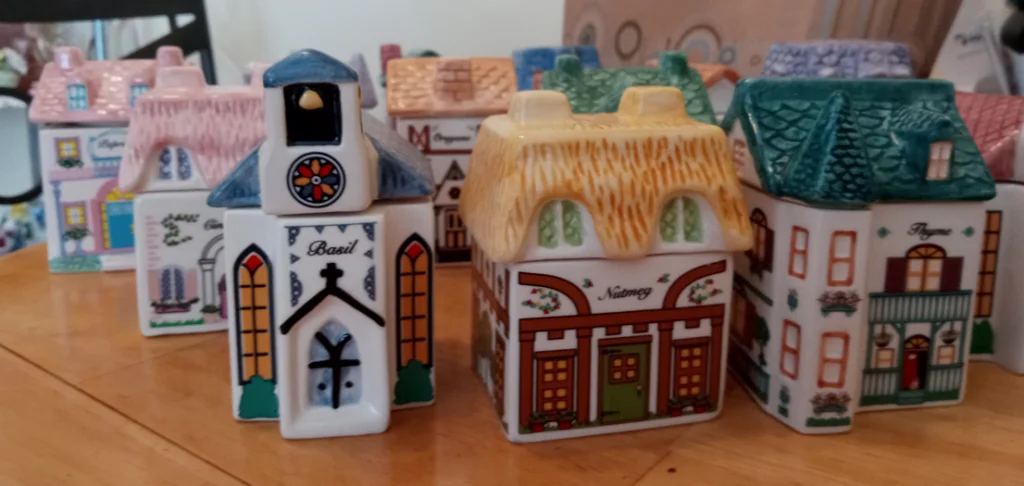
Organization met style in the form of wooden spice racks filled with matching glass jars, each one carefully labeled with those distinctive ’70s fonts. These weren’t just storage solutions – they were kitchen decor that showed you were serious about cooking and presentation. The racks usually held about 20 jars, enough for the basic spices plus a few exotic ones that made you feel worldly and sophisticated.
Filling and maintaining these spice collections was a ritual in itself, often involving trips to specialty stores or the bulk section of the health food store. You’d transfer oregano, paprika, and garlic powder into the matching jars, carefully writing labels in your best handwriting or using those satisfying label makers with the embossed tape. The alphabetical arrangement wasn’t just practical – it was a point of pride that demonstrated your domestic prowess to anyone who opened your spice cabinet.
8. Copper-Toned Small Appliances
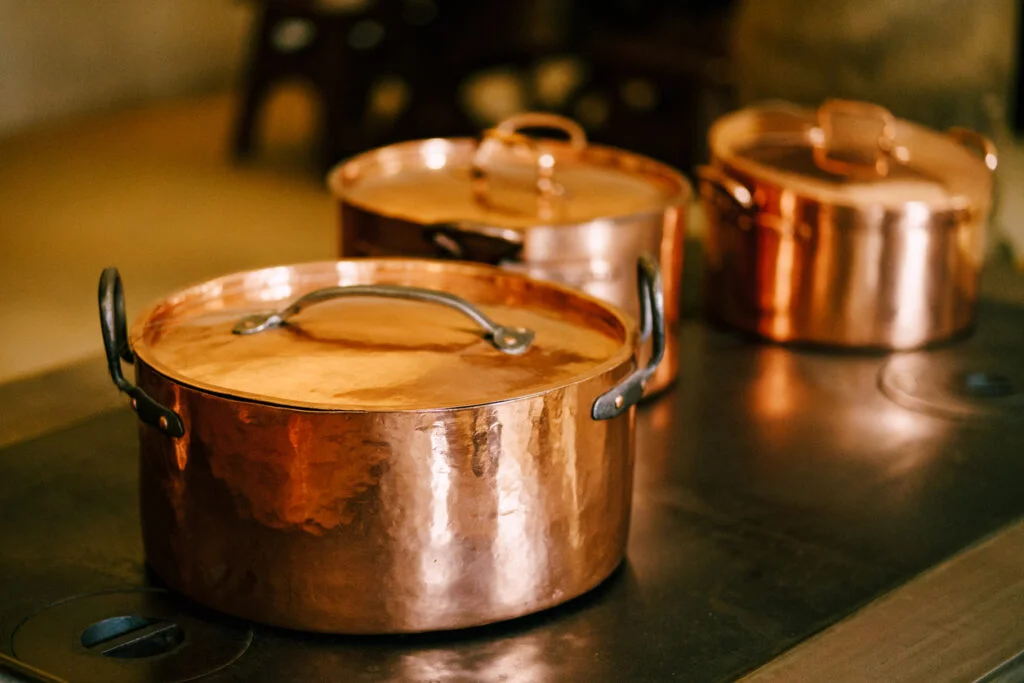
The countertop was a showcase for small appliances in gleaming copper tones that matched the decade’s warm color palette perfectly. Toasters, coffee makers, blenders, and can openers all came in this rich, metallic finish that was supposed to look like authentic copper but was really just very convincing coating. These appliances weren’t just functional – they were decorative elements that tied the whole kitchen design together.
The copper finish required special care to maintain its luster, and many households developed elaborate cleaning routines involving special polishes and soft cloths. You’d spend Sunday afternoons buffing your toaster to a mirror shine, making sure it looked as good as the day you brought it home from the department store. When friends visited, these gleaming appliances sent a clear message: this was a kitchen where both style and substance mattered.
9. Lazy Susans in Every Cabinet
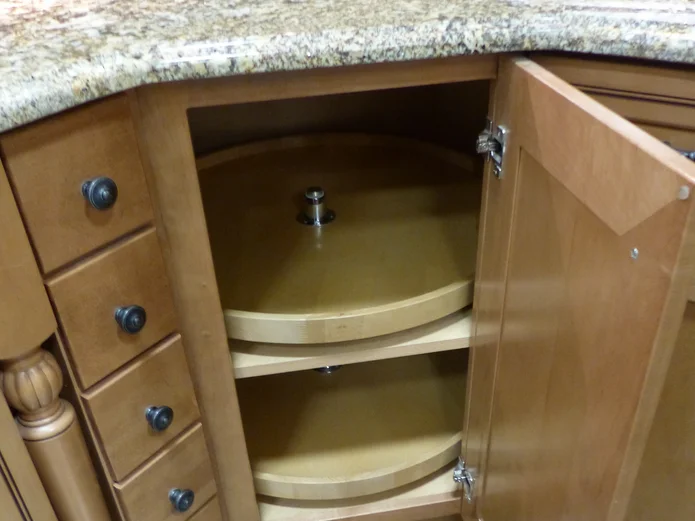
Corner cabinets were notorious dead zones until the lazy Susan came along to revolutionize storage and accessibility in the ’70s kitchen. These rotating platforms, usually made of wood or heavy plastic, transformed awkward corner spaces into efficient storage areas where you could reach everything with a simple spin. Loading them became an art form as you arranged canned goods, condiments, and cooking supplies in perfect balance.
The satisfying whoosh of a well-oiled lazy Susan became part of the kitchen soundtrack, especially during meal preparation when you’d give it a few spins to find exactly what you needed. They weren’t just practical – they felt futuristic and space-age, like something from The Jetsons brought into real life. Every kitchen designer worth their salt included at least one lazy Susan in their plans, and having multiple rotating platforms was a sign of serious kitchen sophistication.
10. Harvest Gold Major Appliances
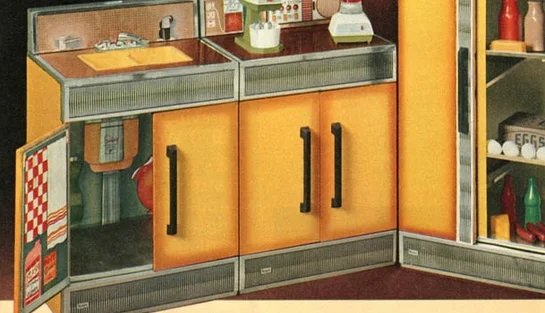
While avocado green dominated one camp, harvest gold appliances created their own devoted following with that warm, wheaty color that was somehow both homey and elegant. Your harvest gold refrigerator, range, and dishwasher created a coordinated suite that anchored the entire kitchen design in warmth and sophistication. These weren’t just appliances – they were furniture pieces that defined the space and your family’s aesthetic sensibilities.
The color was marketed as timeless and sophisticated, promising to never go out of style the way stark white appliances might. Appliance shopping became an exercise in coordination as you made sure your major purchases would work together harmoniously for years to come. Sales floors were carefully arranged to show off complete harvest gold kitchens, and walking through these displays felt like glimpsing the future of domestic perfection.
11. Mushroom Canisters and Decorative Storage
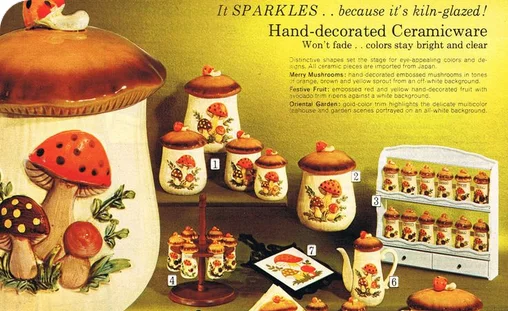
Kitchen counters were adorned with sets of ceramic canisters decorated with mushrooms, owls, or other nature-inspired motifs that perfectly captured the ’70s fascination with woodland themes. These weren’t just storage containers – they were decorative statements that held flour, sugar, coffee, and tea while adding personality to your workspace. The mushroom theme was particularly popular, with its whimsical red caps and white spots bringing a touch of fairy tale magic to everyday cooking.
Arranging these canisters was an art form in itself, with size progression and color coordination being serious considerations for the style-conscious homemaker. You’d spend time finding the perfect spot where they’d be both functional and photogenic, often featuring them prominently in family photos taken in the kitchen. When guests complimented your canisters, you knew you’d achieved that perfect balance of practicality and charm that defined good ’70s kitchen design.
12. Breakfast Nooks with Built-in Seating
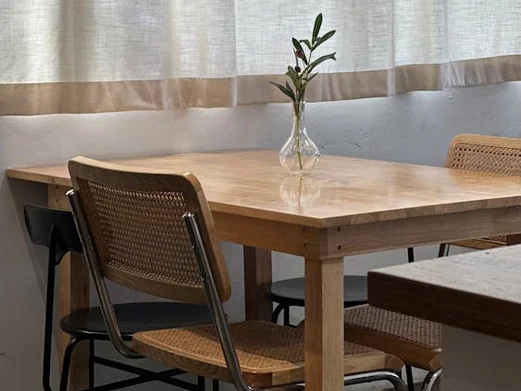
The breakfast nook represented the ultimate in space-efficient, cozy dining with built-in banquette seating and a compact table that fit perfectly into kitchen corners or bay windows. These intimate eating spaces were designed for casual family meals and felt more relaxed than formal dining rooms, encouraging lingering conversations over coffee and toast. The upholstery was usually vinyl or fabric in colors that coordinated with the kitchen’s overall design scheme, often featuring bold patterns or textures.
Storage was cleverly built into the bench seating, providing hidden compartments for table linens, placemats, or seasonal items that needed to be kept handy but out of sight. The close quarters meant everyone sat within easy conversation distance, making breakfast a more social affair than it might be at a traditional table. These nooks became the unofficial command centers of many households, where homework was reviewed, bills were paid, and family plans were made over steaming cups of coffee.
The 1970s kitchen was more than just a place to prepare meals – it was a reflection of an era’s optimism, creativity, and belief that design could make everyday life more beautiful. While we might chuckle at some of these choices today, there’s no denying the warmth and personality these spaces brought to family life. Whether it was the satisfying crack of an ice cube tray or the gentle sway of macramé plant hangers, these kitchens created memories that have lasted far longer than the trends themselves.
This story The Carpets Were Orange and the Ice Was in Trays: 12 Details of a ’70s Kitchen We’ll Never Forget was first published on Takes Me Back.


